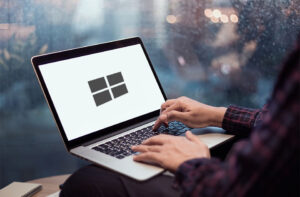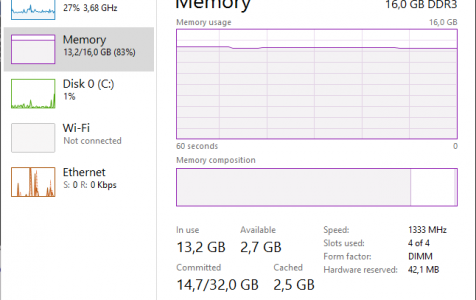Many computer users face high memory usage despite having sufficient RAM. This can cause performance issues, and it is challenging to identify the cause of the problem. The task manager can show a high memory usage without indicating what’s causing it, leaving the user to figure it out.
This quick guide will help you if you’re having the same issue with high memory usage on Windows 10/11 – and how to perform a proper Windows 10/11 memory leak fix.
Very high memory usage: Windows 10/11 issue
 This unpleasant experience can very well occur on Windows 10/11, where some users report they are unable to use their computer after some time because of high memory usage. While restarting their machine helps, the problem comes back to haunt them once again.
This unpleasant experience can very well occur on Windows 10/11, where some users report they are unable to use their computer after some time because of high memory usage. While restarting their machine helps, the problem comes back to haunt them once again.
In certain cases, the memory usage could climb up as high as 70 percent, going further up to 100 percent if a restart isn’t performed. This high memory usage on Windows 10/11 brings computer usage and performance to a halt.
Expert Tip: For smoother PC performance, consider using a PC optimization tool. It handles junk files, incorrect settings, and harmful apps. Make sure it's right for your system, and always check the EULA and Privacy Policy.
Special offer. About Outbyte, uninstall instructions, EULA, Privacy Policy.
But you don’t have to sit on this problem for a long time. Here are some step-by-step procedures to tackle the memory leak on Windows 10/11.
Windows 10/11 memory leak fix list
Here are five quick to intricate fixes you can try today:
- Running antivirus programs – The first thing you need to do is to run a virus scan of your system files using a trusted antivirus program. If you haven’t installed one, you can use Windows Defender for assistance. This built-in program helps rule out suspicious programs as well as system files that might be causing the high memory usage on Windows 10/11. If you happen to find a problematic file or program, remove it entirely from your computer and watch if the same program persists.
There are users, however, who report that Windows Defender and other antivirus programs are actually causing unreasonable high memory usage. If it’s the likely culprit, then try to disable your antivirus program to see if it helps.
Adjusting Windows 10/11 for optimum performance – Follow these steps:
-
- Right-click on Computer icon, and then select Properties.
- Choose Advanced System settings.
- Go to System properties. Select Settings.
- Select Adjust for best performance and then click Apply.
- Click OK. Restart your computer.
- Disabling startup programs – Simply hit Windows key + R, and then type msconfig before pressing Enter. The task manager window will open. From there, click on Startup and you’ll find a list of programs running at startup. Right-click on the apps that you don’t want running at startup. Finally, select Disable.
- Using RamMap to empty system working set – This free tool by Microsoft can show metafile usage and find which RAM areas are used by which applications. It’s a great tool to address high memory usage on Windows 10/11 and you have no idea why the issue exists. It could, for instance, be caused by Windows using high amounts of metafile memory, effectively clogging the server. In this case, you can use Empty -> System working set to clear it and lead free RAM back to normal.
One method is to use Count data in RamMap, which reveals process memory utilization on the Processes tab. Here you’ll find all processes listed, their corresponding private memory utilization, any process memory that’s occupying the standby or modified page list, and the amount of memory allocated for page table entries.
- Using VMMap to see what’s using virtual memory – VMMap is another process-oriented tool that allows you to view an existing process as well as trace a new one and observe its memory usage in greater detail than RamMap allows. When this tool launches, it prompts users to select an existing process they want to investigate (or maybe start a new one). Launching a new process enables you to trace memory utilization, including heap and virtual allocations.
Notes and conclusion
Troubleshooting very high memory usage on Windows 10/11 requires an in-depth understanding of the operating system and a working knowledge of how to use Windows Debugger or Performance Monitor.
If, for instance, you’re trying to obtain details such as driver memory consumption, you will need advanced experience with debugger commands and kernel data structures. The good news is RamMap and VMMap make troubleshooting memory issues easier than it sounds.
Note, too, that unexplainably high memory usage on Windows 10/11 could be linked to your computer crying out for help. Get your desktop or laptop running fast and smoothly with a reliable tool like Outbyte PC Repair, which diagnoses your Windows system, restores system stability, and enhances computer speed and performance.
That’s it – we hope you find the Windows 10/11 memory leak fix that works in your specific case!

msconfig in win 10, doesn’t open from the run box – you need to open taskmanager
You can still open MsConfig from the run box in windows 10